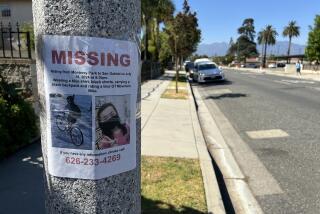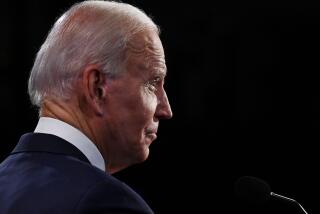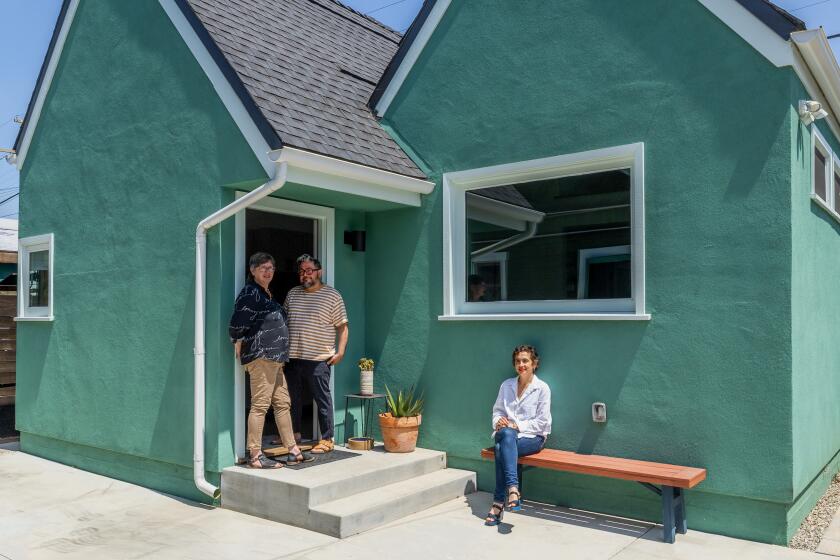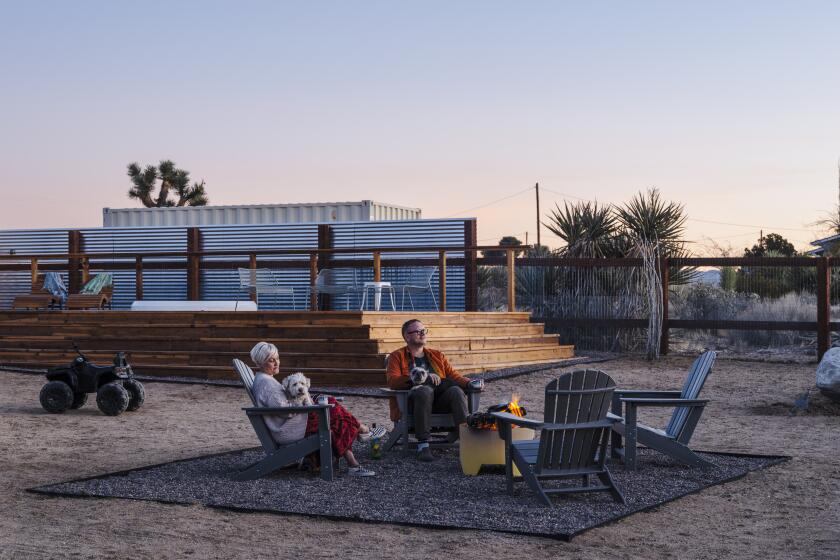On a Mission : Renovation of San Gabriel Landmark Nears Completion
The six bells that used to ring out across miles of open land from the mission tower now sit silent. Earthquake-stricken adobe walls stand with the help of wooden supports.
Renovation continues at the San Gabriel Mission, and if all goes as planned, the unsteady buildings will stand on their own and the bells will ring again in time for the mission’s 225th anniversary next September.
In recent days, workers on ladders have carefully chipped away plaster from the walls of the old Franciscan rectory, now the mission museum. The building was closed along with the fortress-like mission church after it sustained major structural damage in the 1987 Whittier Narrows earthquake. The church was restored and reopened in 1993, with the help of about $1.2 million raised by the parish, and withstood the 1994 Northridge temblor with only superficial damage.
The latest phase of work, which began several weeks ago, will repair and reinforce the mission’s bell tower, museum, kitchen and winery and the nearby Lopez de Lother adobe house--all timeworn pieces of history that restoration director Helen Nelson says “must be preserved.”
After all, from this mission--the oldest European-founded settlement in the Los Angeles area--44 settlers departed in 1781 to build a little pueblo about nine miles to the west that would later become Los Angeles.
“This mission can never be forgotten,” said Guadalupe Garcia, a renovation worker powdered with adobe dust. “It’s history for the next generation.”
The original mission was founded in 1771 near the Rio Hondo and what is now the intersection of East Lincoln Avenue and San Gabriel Boulevard, on the edge of Montebello. Flooding forced the missionaries to relocate four years later to higher ground at the present site, and most of the remaining buildings date from the early 1800s.
Inside the museum one recent morning, Nelson led state and federal officials through stripped hallways, walking over clods of adobe and dust. Gaping cracks left in the earthen walls by recent temblors stretched from the doorways to the ceiling.
The mission is eligible to receive relief funding from the Federal Emergency Management Agency and the Governor’s Office of Emergency Services because it is a historic monument, Nelson said. The latest phase of restoration will cost as much as $1 million.
The work will require meticulous attention to detail, said Mark Sauer, the contractor in charge of the project. Workers will push unsteady rectory walls into alignment, match adobe soil to fill the cracks and cover them with adobe plaster.
“Everything will be cleaned, repaired, seismically stabilized,” Sauer said.
Those are welcome words to residents such as Mike L. Falabrino, who has known the mission since childhood.
As the 78-year-old chairman of the restoration committee followed along on Nelson’s tour of the mission, he recalled his own baptism there on Columbus Day, 1924. He was only about 7, but he remembers being blessed with holy water from the hand-hammered copper baptismal font that still sits in the church. Falabrino, a former mayor of San Gabriel, says the mission holds special significance.
“It’s like sacred grounds for me,” he said. When Falabrino attended the San Gabriel Mission’s grammar school, the large Angeles bell would ring at noon every day. And sometimes, Falabrino said, he got to pull the rope. “The bells in those days . . . you could hear them beautiful,” he said.
All six bells were taken down after the 1987 earthquake left the bell tower weakened, its belfries held up by wooden scaffolding and metal braces. In the courtyard, three bells rested bottom-down and muted. But one hung just above the ground.
Nelson, giving a demonstration, squatted down and tugged the rope that held the clapper, and a sound older than Los Angeles echoed out into the courtyard.
“Gorgeous tone,” she said.
More to Read
Sign up for Essential California
The most important California stories and recommendations in your inbox every morning.
You may occasionally receive promotional content from the Los Angeles Times.






